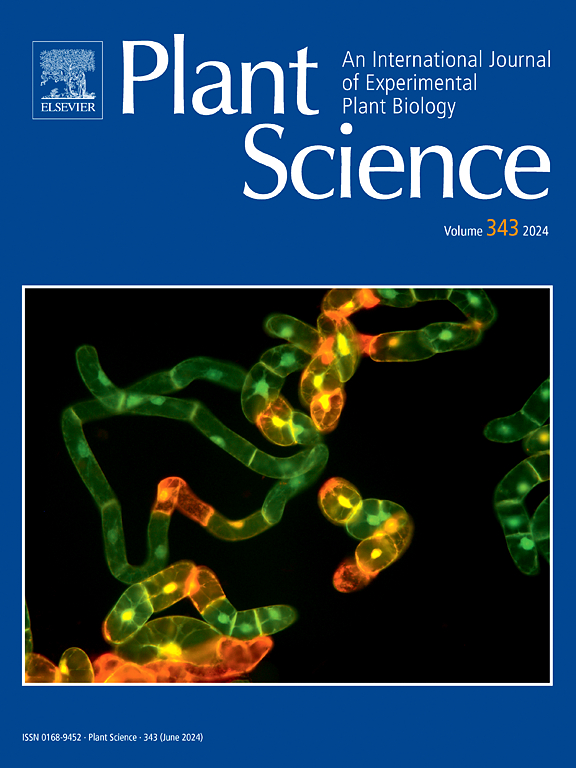ABA and defoliation improve phenolic composition of wine grapes while ABA reduces must free amino acid content and modifies its profile
IF 4.2
2区 生物学
Q2 BIOCHEMISTRY & MOLECULAR BIOLOGY
引用次数: 0
Abstract
Grape (Vitis vinifera L.) ripening modulation through exogenous growth regulators and cultural practices has benefits but also downfalls. Abscisic acid (ABA) applications have shown to induce great increases of anthocyanin synthesis and wine color. In turn, severe defoliation may reduce translocation of sugars into berries delaying ripening. The aim of the study was to investigate the interactive effects of exogenous ABA applications to berries and 75 % vine defoliation on grape ripening and nano vinification composition of Tempranillo fruit-bearing cuttings at bunch closure, 46 days after fruit set. At bunch closure the ABA applications started, and plants were partially defoliated (from 12 of untreated to down to 3 leaves) in a factorial design 2 by 2. After 48 h of treatment application, ABA levels in berries increased 10-fold, and concomitantly, the indole acetic acid (IAA) in the berries also increased. Grape anthocyanin content was increased by ABA for berries with the same total soluble solids (TSS), and this was translated to an increase in total polyphenol index (A280) of nano vinifications. Another effect of ABA application was a decrease in free amino acids in the berry must. In addition, the profile of amino acids was shifted to higher proportion of GABA and Glu in detriment of Gln, which implies a GABA shunt activation. Defoliation delayed berry development and induced changes in composition, but only titratable acidity was reduced for berries with the same TSS. Nano vinifications from defoliated plants had higher color attributes (free anthocyanins, flavonols, A360, A620, A420/520 and A620/520). When these two treatments were combined, berries had the highest anthocyanin content while amino acids attributed as aromatic precursors were reduced in must. Results suggest that grape and wine quality attributes such as acidity and color intensity are not necessarily related to ripening speed. The impacts of ABA on berry nitrogen metabolism, deserve further investigation.
ABA和落叶改善了酿酒葡萄的酚类成分,而ABA降低了必需游离氨基酸的含量并改变了其结构
葡萄(Vitis vinifera L.)成熟调节通过外源生长调节剂和文化实践有好处,但也有缺点。应用脱落酸(ABA)可以诱导花青素合成和葡萄酒颜色的显著增加。反过来,严重的落叶可能会减少糖转运到浆果延迟成熟。本研究的目的是研究外源ABA在果实上的施用和75% %的藤叶脱落对葡萄成熟的互作影响,以及在果实落子后46天,丹尼罗果实切块的纳米酿酒成分。在束闭时开始施用ABA,在2 × 2的析因设计中,植物部分落叶(从未经处理的12片叶片降至3片叶片)。处理48 h后,果实中ABA含量增加了10倍,吲哚乙酸(IAA)含量也随之增加。在总可溶性固形物(TSS)相同的条件下,添加ABA可提高葡萄花青素含量,并可提高纳米葡萄的总多酚指数(A280)。施用ABA的另一个影响是浆果果实中游离氨基酸的减少。此外,氨基酸谱上GABA和Glu的比例较高,而Gln的比例较低,这表明GABA分流激活。落叶延迟了浆果的发育并引起了成分的变化,但相同TSS的浆果只降低了可滴定酸度。从落叶植物中提取的纳米葡萄酒具有较高的颜色属性(游离花青素、黄酮醇、A360、A620、A420/520和A620/520)。当这两种处理相结合时,浆果中花青素含量最高,而作为芳香前体的氨基酸含量减少。结果表明,葡萄和葡萄酒的品质属性,如酸度和颜色强度不一定与成熟速度有关。ABA对浆果氮代谢的影响值得进一步研究。
本文章由计算机程序翻译,如有差异,请以英文原文为准。
求助全文
约1分钟内获得全文
求助全文
来源期刊

Plant Science
生物-生化与分子生物学
CiteScore
9.10
自引率
1.90%
发文量
322
审稿时长
33 days
期刊介绍:
Plant Science will publish in the minimum of time, research manuscripts as well as commissioned reviews and commentaries recommended by its referees in all areas of experimental plant biology with emphasis in the broad areas of genomics, proteomics, biochemistry (including enzymology), physiology, cell biology, development, genetics, functional plant breeding, systems biology and the interaction of plants with the environment.
Manuscripts for full consideration should be written concisely and essentially as a final report. The main criterion for publication is that the manuscript must contain original and significant insights that lead to a better understanding of fundamental plant biology. Papers centering on plant cell culture should be of interest to a wide audience and methods employed result in a substantial improvement over existing established techniques and approaches. Methods papers are welcome only when the technique(s) described is novel or provides a major advancement of established protocols.
 求助内容:
求助内容: 应助结果提醒方式:
应助结果提醒方式:


